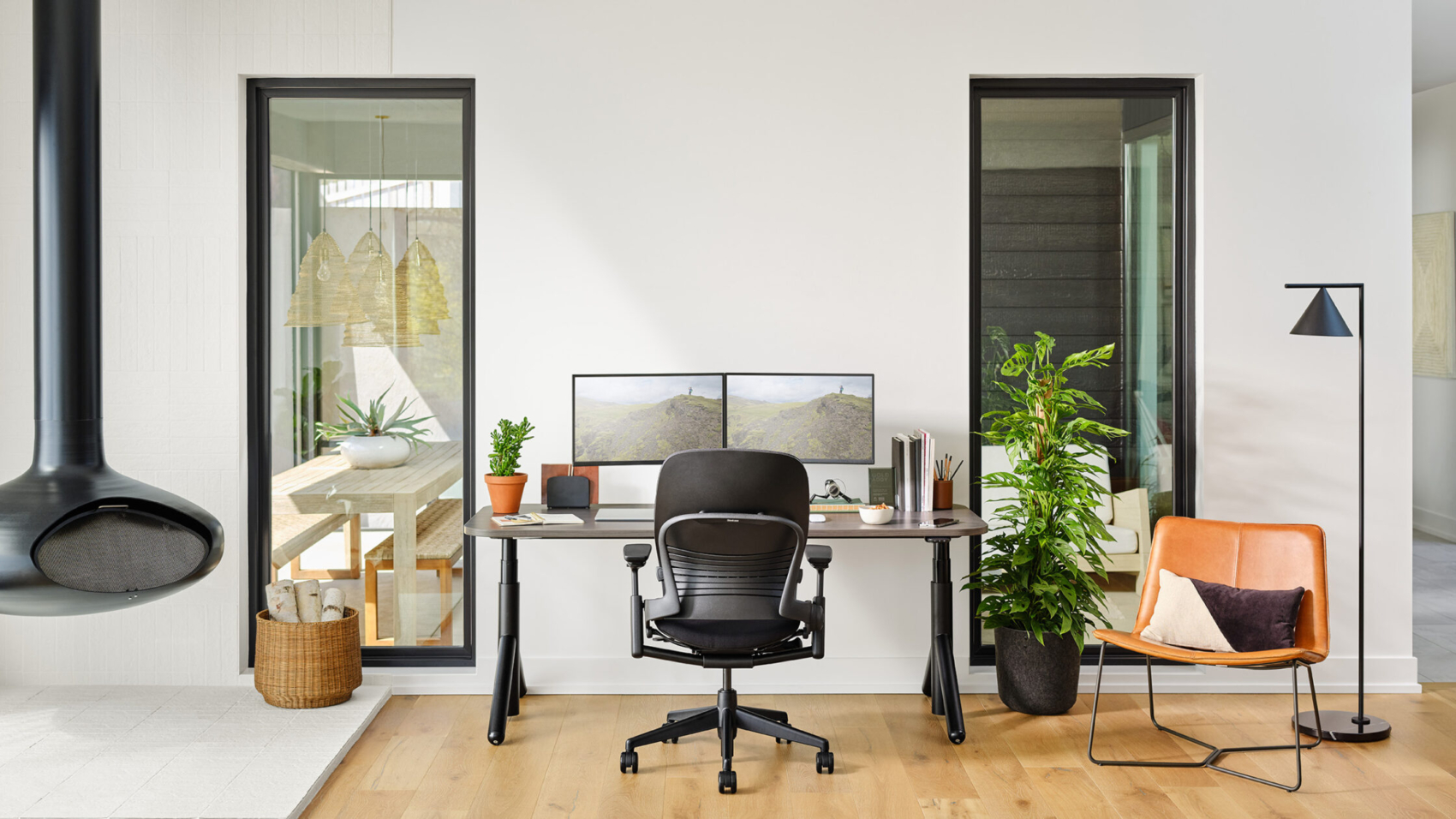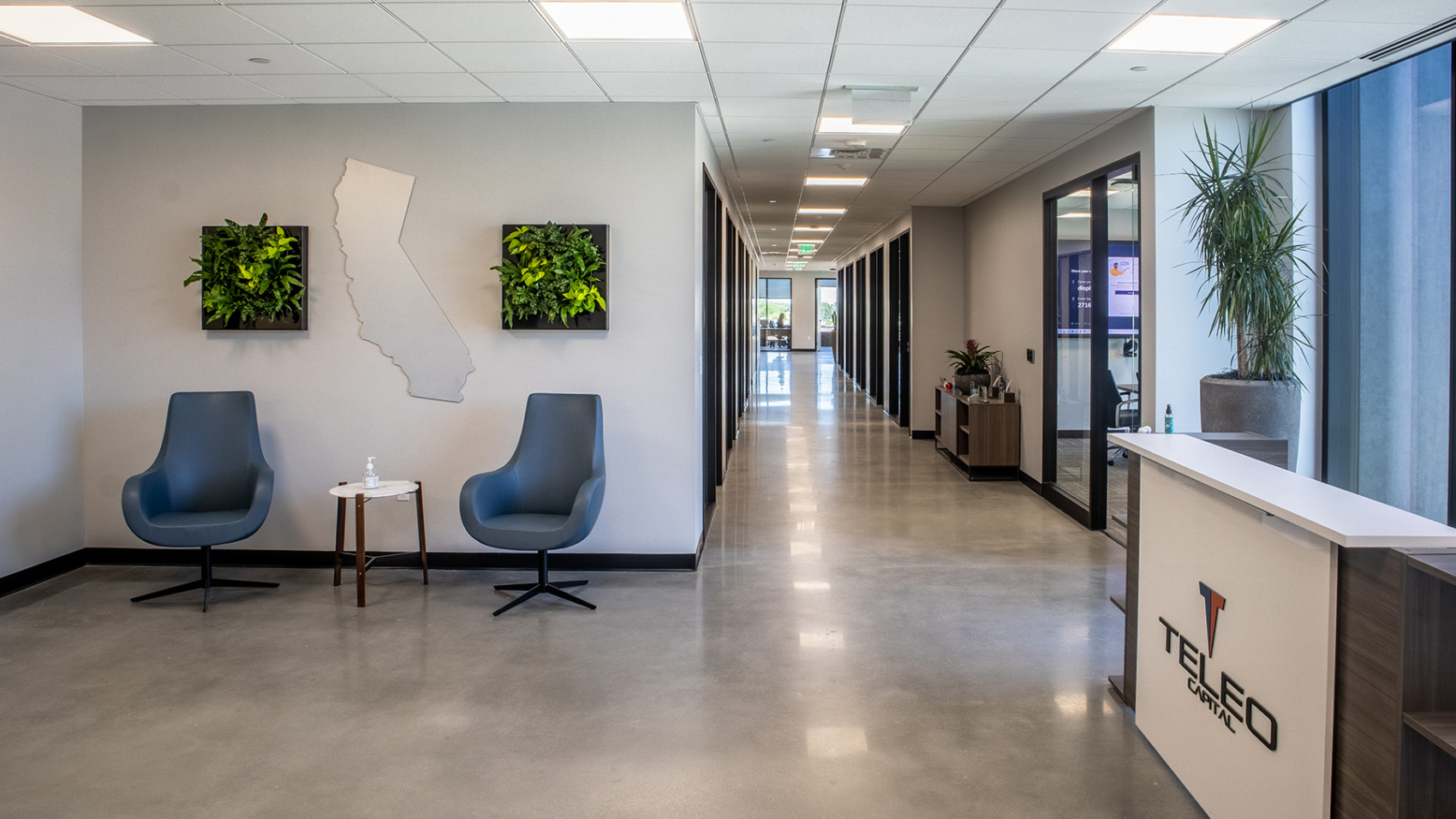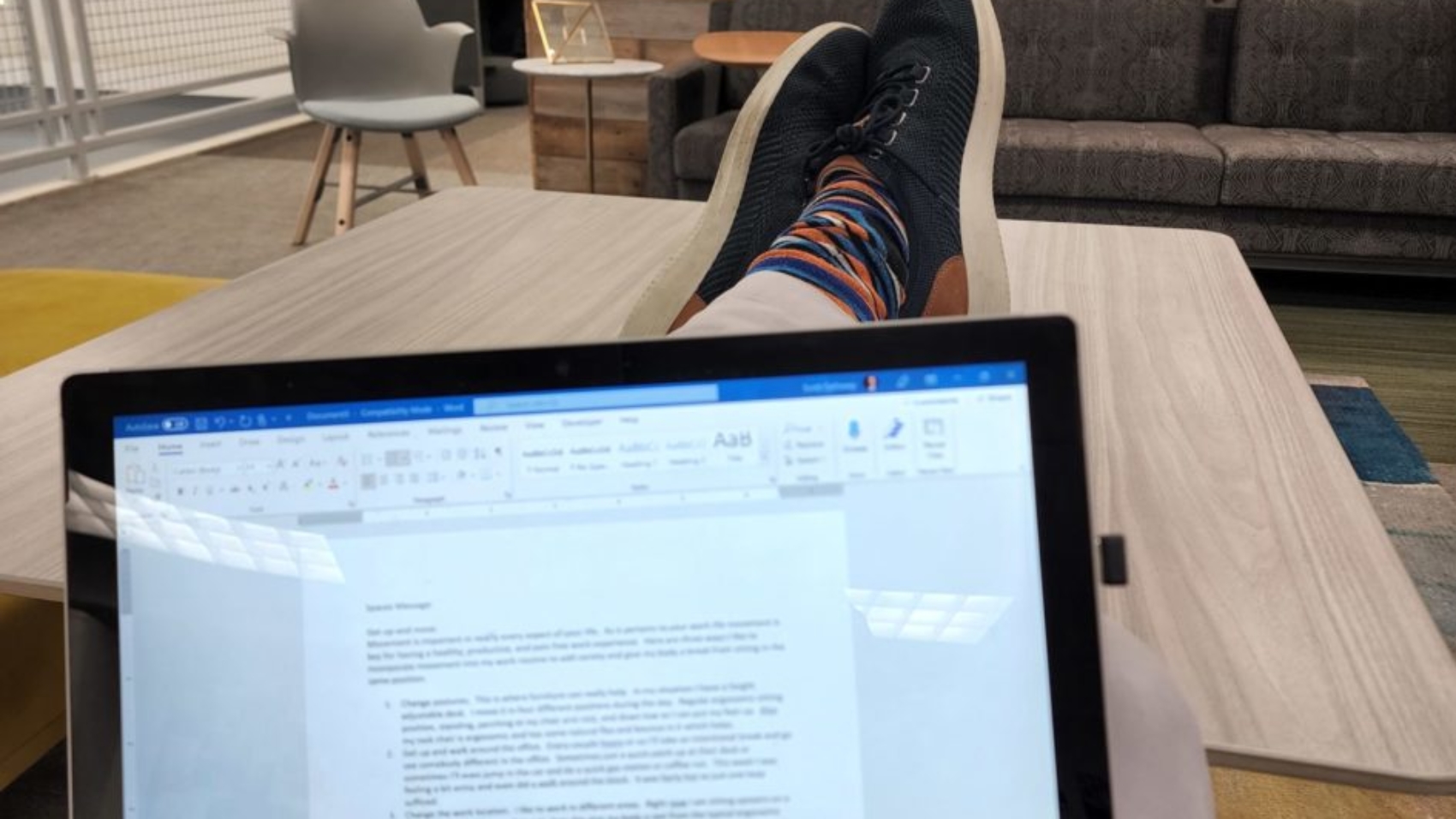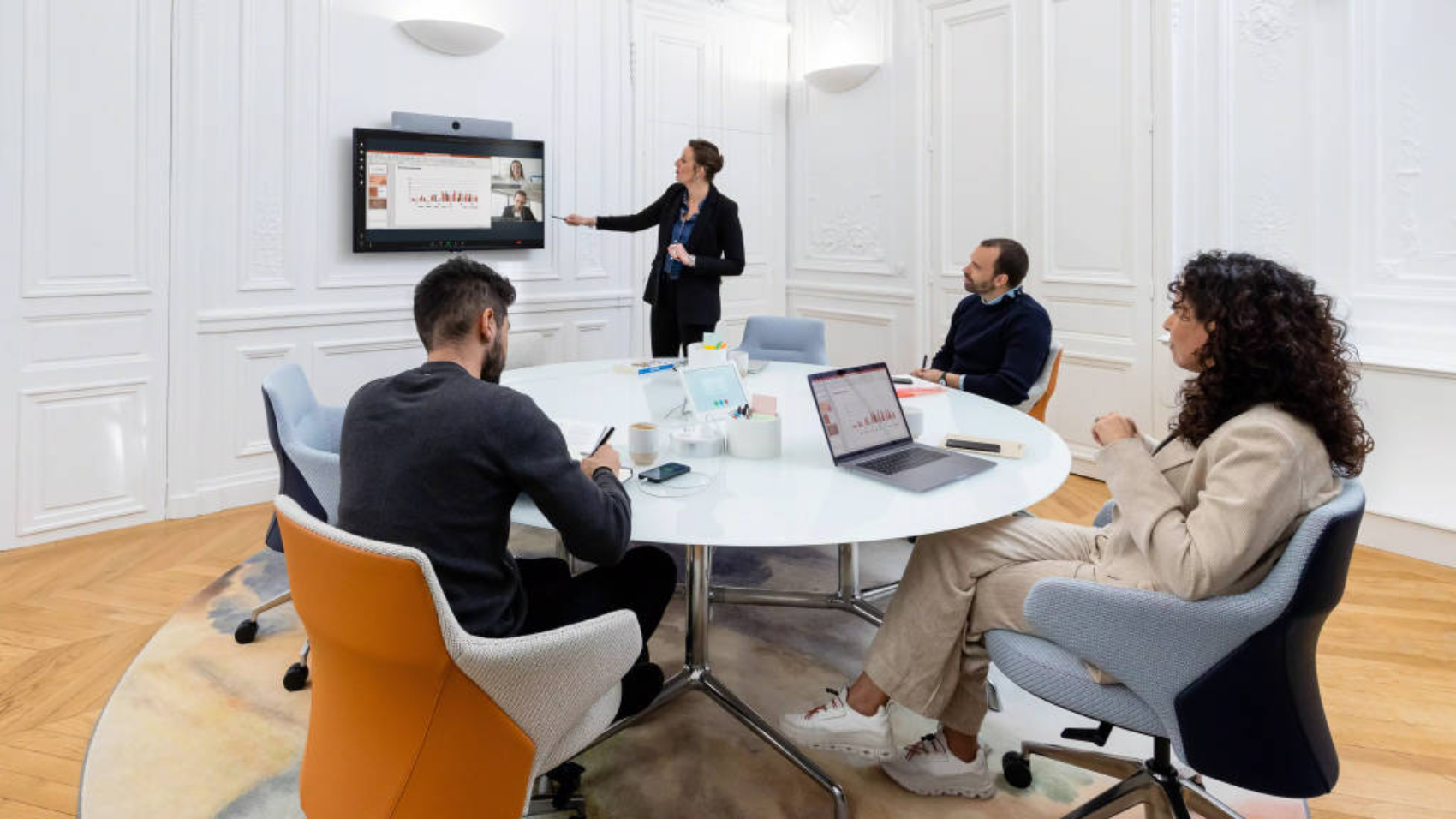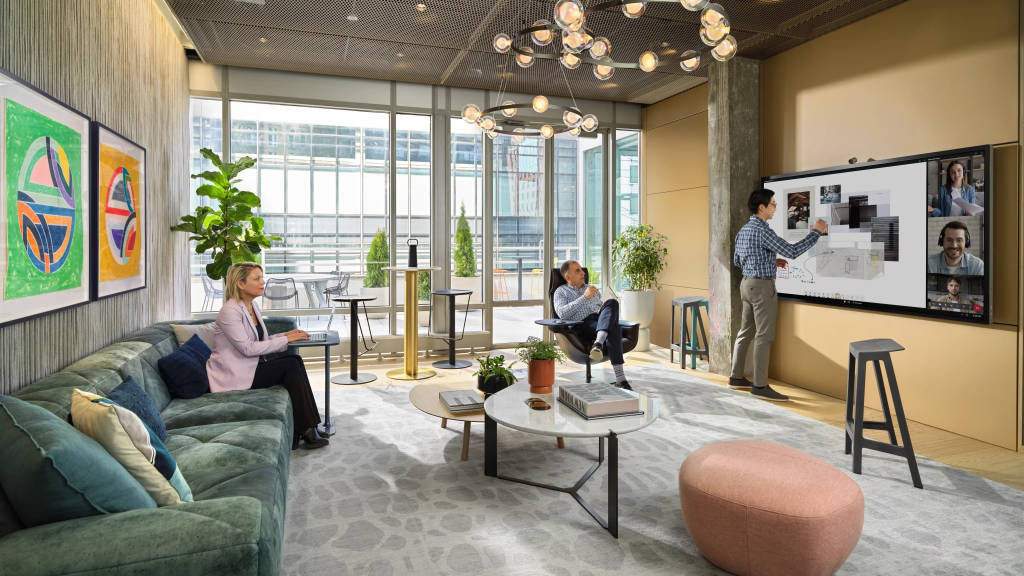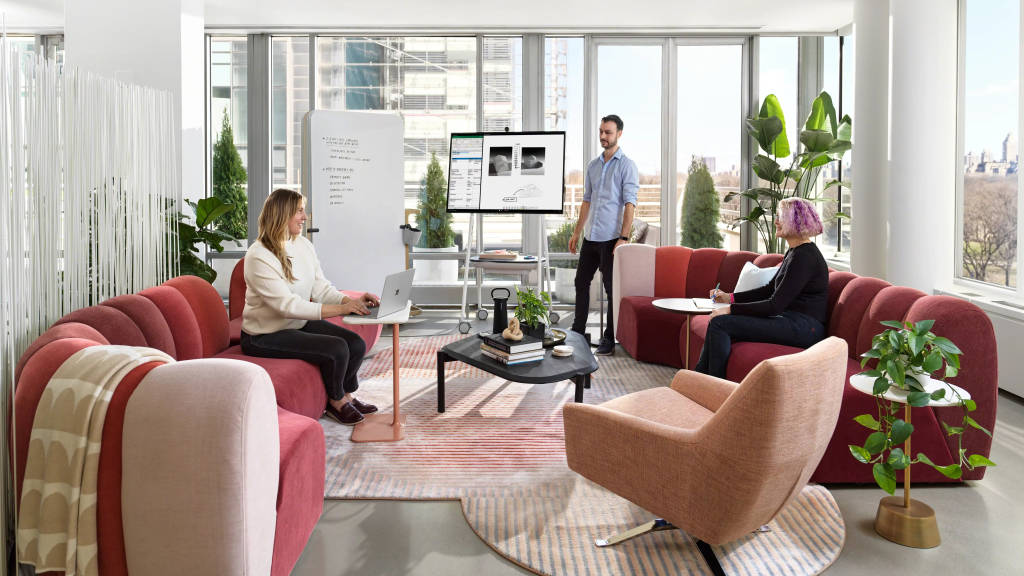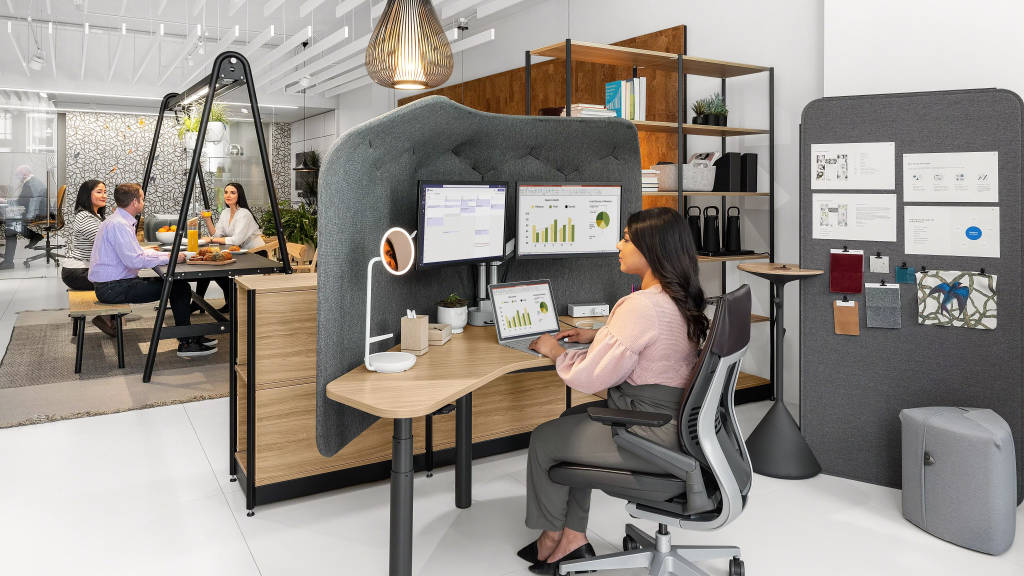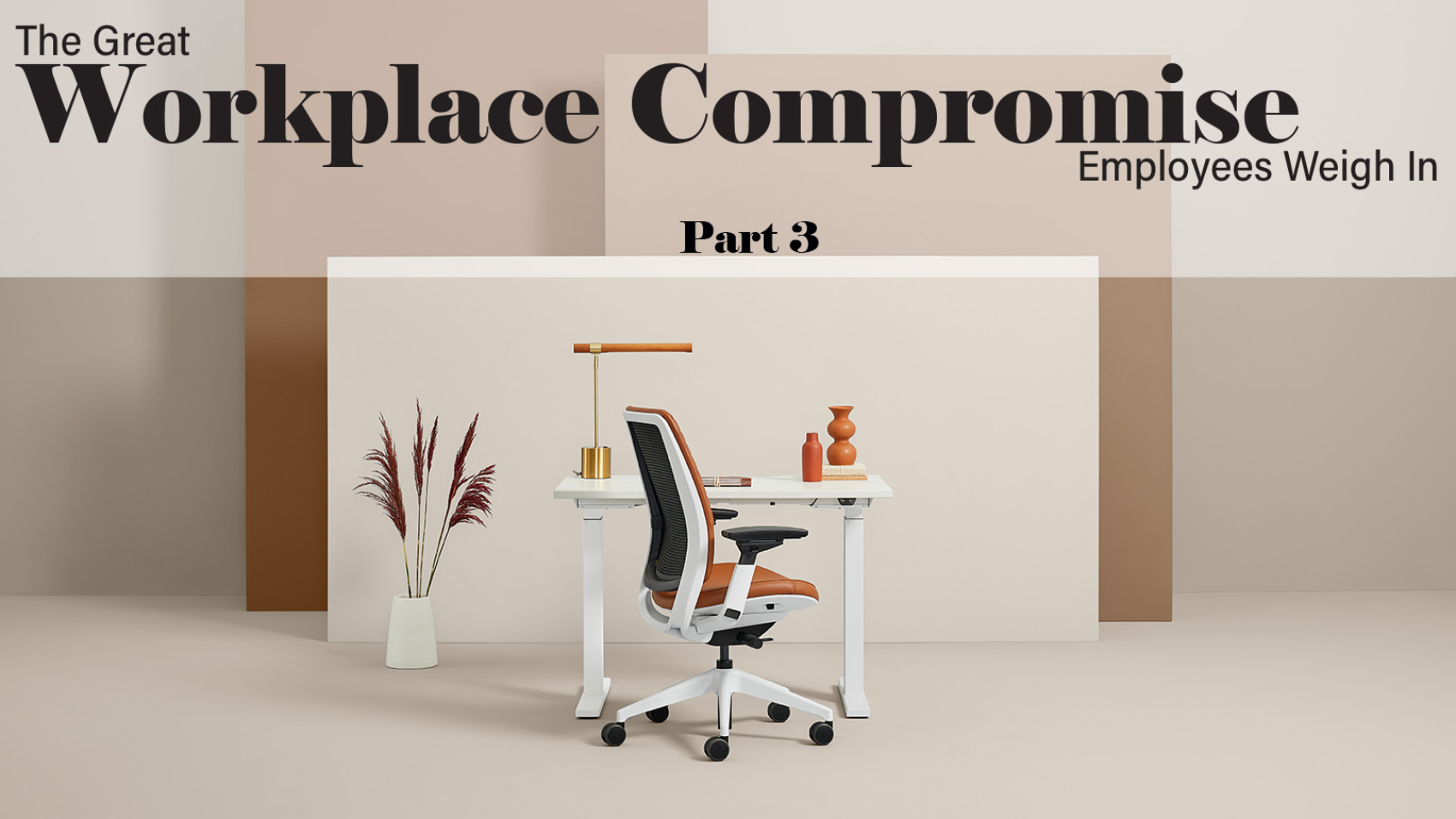One of the main reasons employees enjoy working from home is control; control over their schedules, their focus, and their postures. When working from home, no one cares if you kick your feet up on the couch or get cozy under a big blanket. You can take any range of postures in any number of rooms to find how you work best.
However, in the office, few employees have that level of control. They are restrained to one workspace, sometimes in one posture, visible to everyone. Building an alluring office should be a key part of your return to work strategy.

How Do Create An Alluring Office By Giving Employees Individual Control?
The discussion around returning to the office often focuses on work life balance, but there is more. Offering individual control is critical when luring remote workers back to the office. Places where people can find privacy, will be among the most coveted spaces in an office. According to Steelcase research, three of the top four elements people value now relate to private spaces.
It makes sense! After months or years spent in the privacy of the home, it is no wonder that employees now look for private and often quiet spaces in an office. Those spaces need to be available, whether someone needs to make a personal phone call or hide away for a few hours to focus. So, creating nooks, visual separation, and other focus rooms is more important than ever to draw back employees.

How Do I Create A Less Distracting Office?
Distractions at home are different than distractions in the office. For starters, home distractions can be anticipated and even scheduled. Children leave and return at specific times, and chores like laundry can be flexible.
In the office, you can’t predict who might walk by, stop to ask a question, or otherwise throw you off your groove. So, removing as many distractions as possible when trying to entice employees to come back is critical. Many of these distractions are audible, so better acoustical solutions, privacy walls, or sound masking systems can help manage sound.
Other distractions at work come from too-open sightlines. When an office is completely open, employees can often become distracted by coworkers. When employees must have heads-down time, adding movable screens or creating quiet nooks are great privacy solutions.

How To I Design a Biophilic Office Environment?
An excellent feature of working from a home office is quick and easy access to natural light and plant life. Scientifically we know that humans are positively impacted by natural light and plants, so the more we interact with them, the better. However, many offices can not offer exposure to natural light or an outdoor patio.
If your office has artificial lighting, it would be wise to invest in lighting that will mimic a circadian rhythm (the body’s internal clock). This translates to blue light in the morning, white light in the afternoon, and red light in the evening. And if you lack views of the outdoors, biophilic office design can come in handy.
The biophilia hypothesis states that humans have an innate tendency to seek connections with nature and other life forms. If this is true, filling your office with plant life is a great way to improve oxygen levels and create a welcoming and relaxing environment. Incorporating biophilia can have healthful benefits and be as easy as using natural materials in your office, pictures of nature, leaf prints, or potted plants.
Organizations seeking to create a more alluring office to entice their employees back to the office would do well to 1. Give employees individual control over their workspace. 2. Remove distractions. 3. Bring light and plant life into the space.
Receive our Newsletter
To receive our newsletter, including new editions of spaces and other digital content, fill out the form below:







